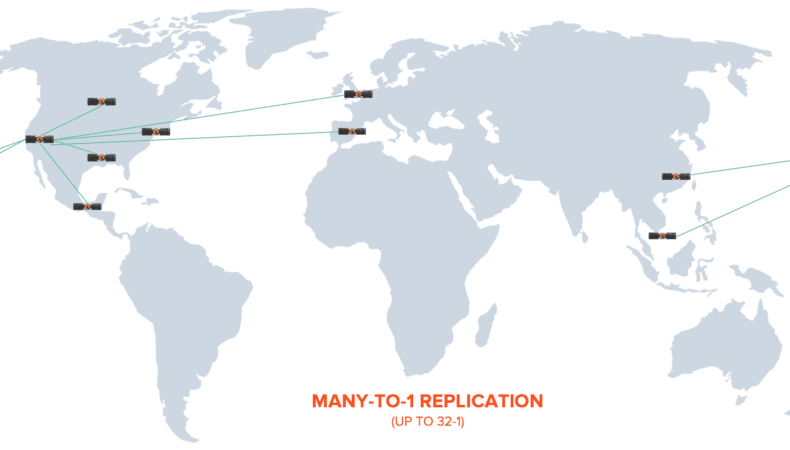Lately, it’s been very busy here at Pure Storage with purity replication. With the launch of FlashArray//X, we have once again disrupted the primary storage market with the first mainstream 100% NVMe enterprise all-flash array.
Great hardware deserves great software, and in this blog I will be talking about Purity//Protect Async Replication, with a little tease on what we will soon be announcing at Pure//Accelerate.
There are usually three main themes which come up when discussing business continuity and disaster recovery solutions with customers:
- Effectiveness
- Ease Of Use
- Economics
Let’s now look at these 3 E’s and how Pure Storage can help you achieve your disaster recovery goals.
Effectiveness
The main topic here is about how the ideal solution can meet your RPOs (Recovery Point Objectives, i.e. how much data you can afford to lose) and RTOs (Recovery Time Objectives, i.e. how fast you need your application to be back up and running). The ideal solution is for both RPO and RTO to be zero, but this is not always possible, as distances between data centers and application requirements might not make this possible.
Today, the Pure FlashArray can help you achieve RPOs down to 5 minutes and a near-zero RTO thanks to Purity’s instant recovery capabilities of multiple LUNs from any point-in-time replica. On top of this, it also supports flexible fan-in/out bidirectional topologies.
A few examples of the topologies we support are provided below:
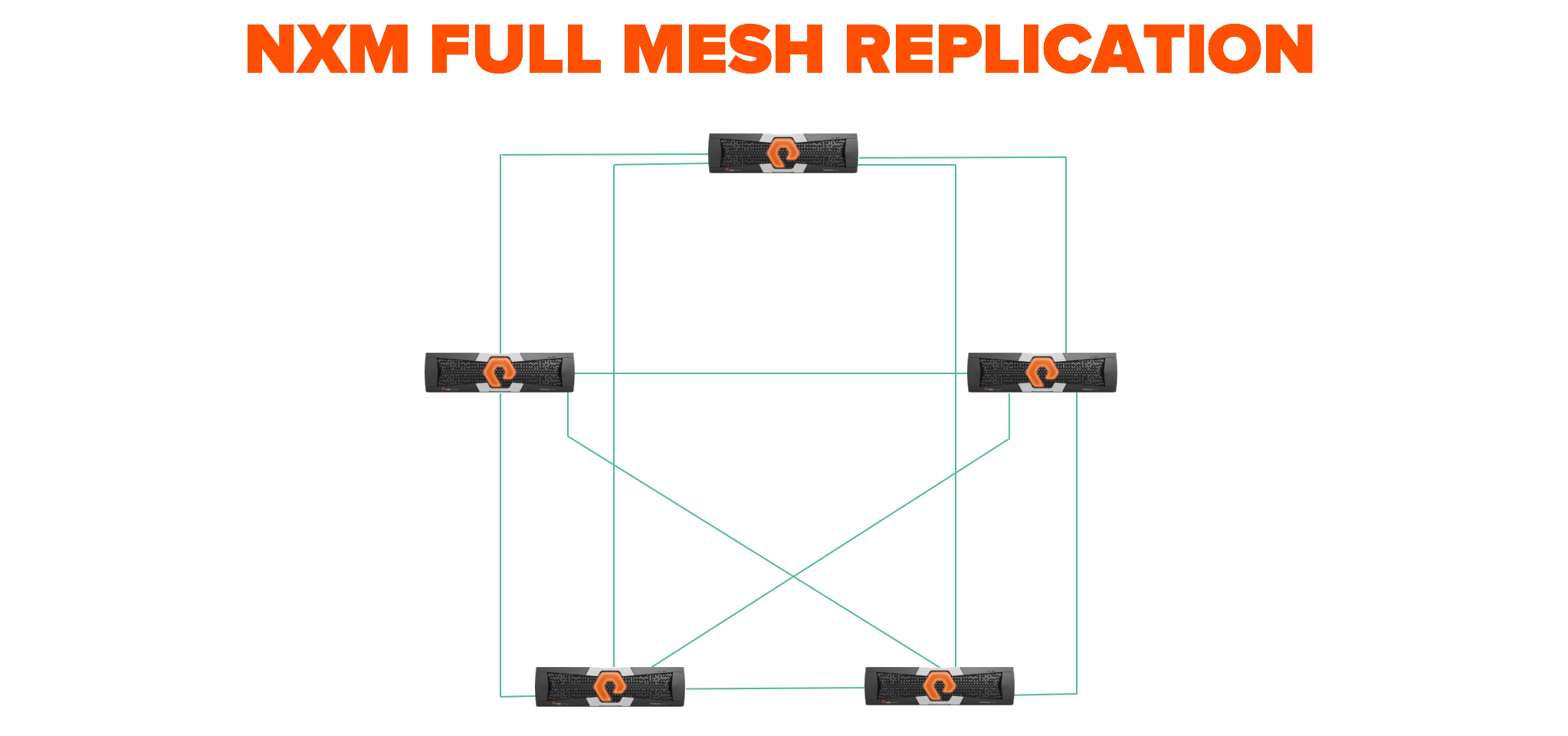
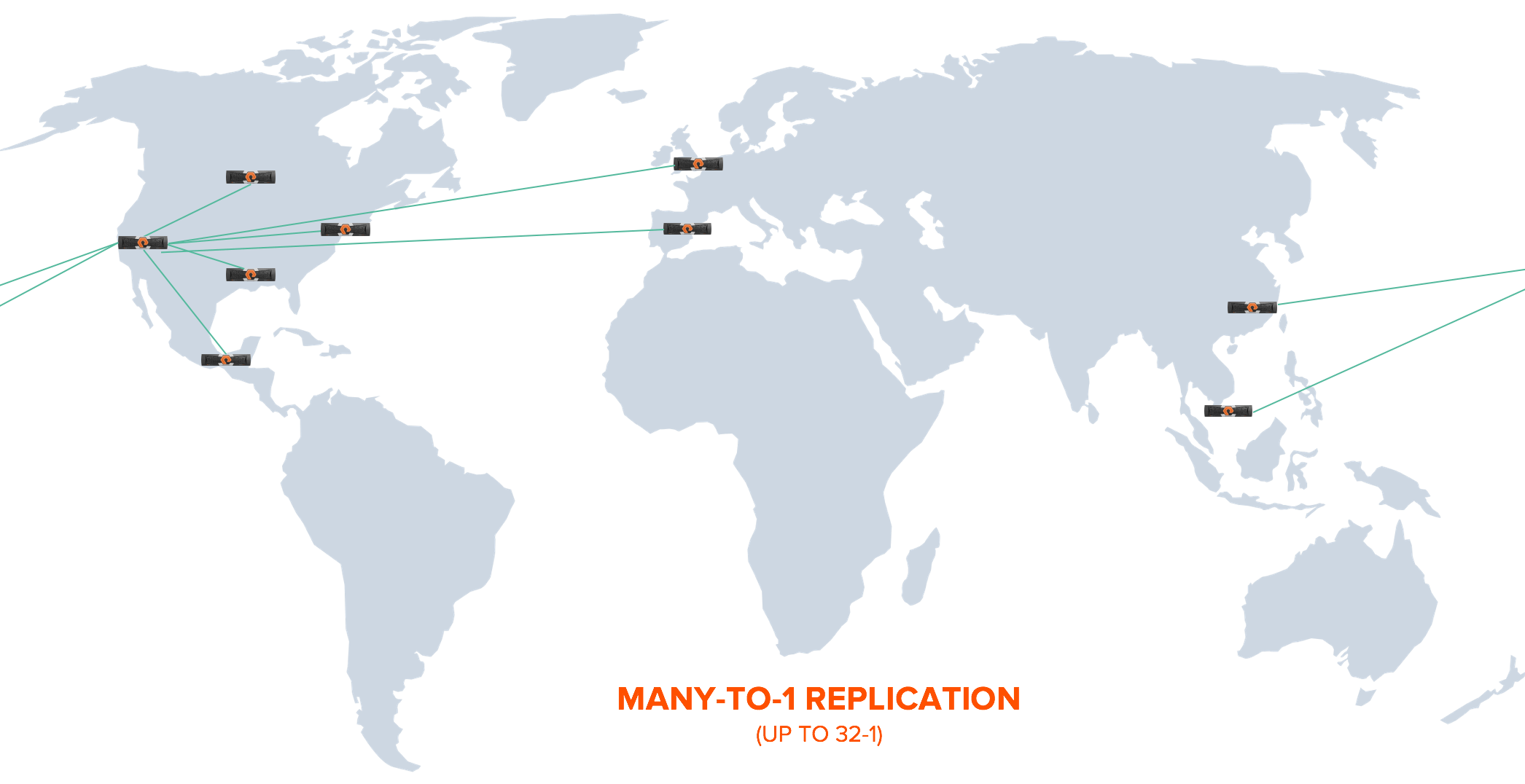
In such topologies, FlashArray’s comprehensive and global deduplication can provide significant capacity savings for replicas on the disaster recovery (DR) FlashArray, making DR both more efficient and affordable.
Additionally, Purity//Protect Async replication delivers flexibility to allow replication to be used for more than just data protection and disaster recovery. New LUNs can be created and provisioned for host IO independently of their parent replicas. Replicas can be used on other arrays to create multiple instances of the same environments without locking snapshots or being bound by dependencies between volumes. This enables the use of DR sites for application workloads or for Development and Test workloads without disrupting the protection policies or other workloads on the arrays. LUNs created from replicas preserve the data reduction of the replica they are recovered from, and they do not require any additional capacity at the time of creation.
Another important point to talk about is how we leverage telemetry data, from thousands of arrays around the world, to assure the solutions we build are indeed effective. Thanks to this data we not only know exactly how well replication is behaving, but also learn what the areas of improvements are.
A good example is provided in the graphic below, which shows how in older versions of Purity ~1.8% of configured RPOs were missed. While this might not come across as a big number our goal is that you always achieve your RPOs. By leveraging data from our global sensors network we have been able to clearly narrow down what to improve and then addressed this in the latest versions of Purity, bringing the amount of RPO misses down to ~0.4%, still some work to be done, but an almost 80% improvement is pretty awesome!
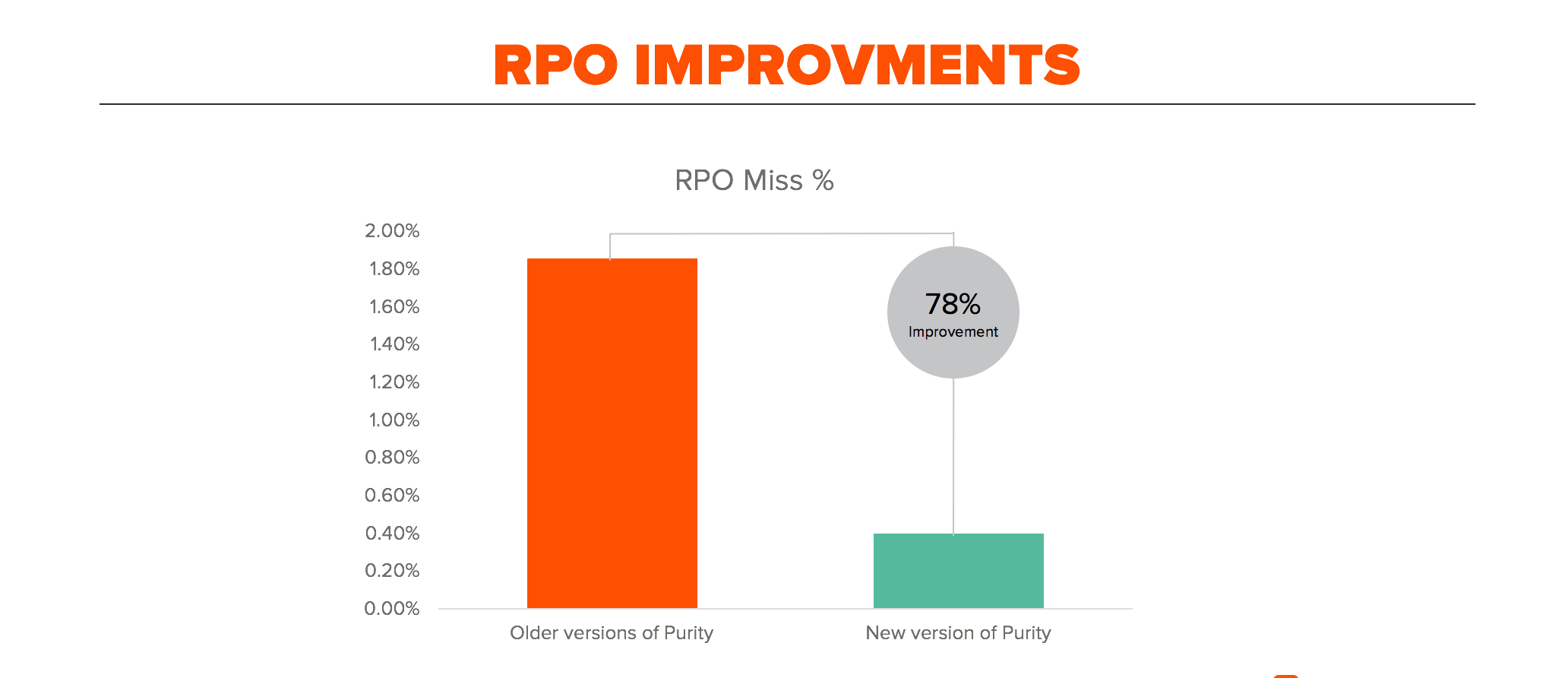
A second example below shows further improvements around how, thanks to continuous monitoring of the replication behaviour, we have made data transfer faster and more predictable.

Ease of Use
One of the main challenges when implementing legacy array-based replication has been the complexity of setting up the solution along with the on-going management overhead. Days to setup replication and tens of thousands of dollars in professional services are common. In contrast, Pure’s approach to replication is “set-and-forget”; replication can be set up within minutes in just three simple steps – connect, configure and schedule. It requires no professional services or complex planning. And, you can monitor replication progress from any device, anywhere. Below is the view from Pure1, where you can see at a glance if you are hitting your RPO targets.
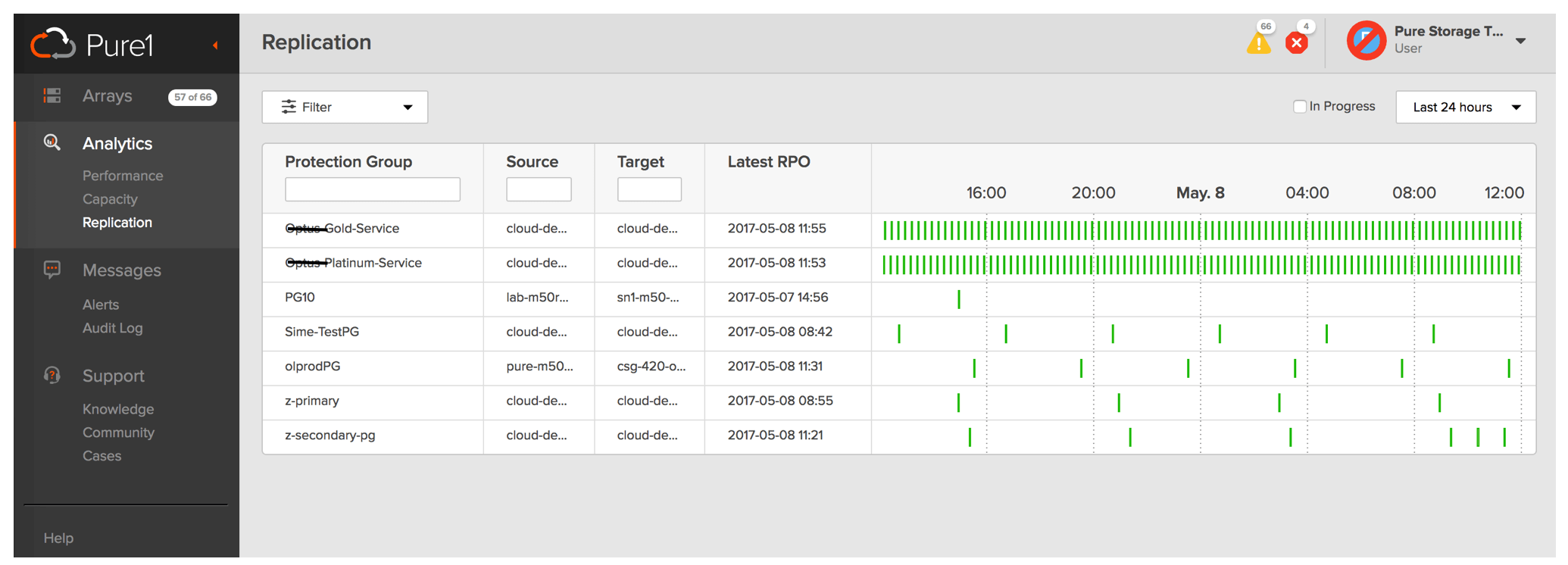
Also important, you don’t have to worry about licensing – it’s all included -even if you decide to use replication after your purchase. Evergreen Subscription means even future replication capabilities will be accessible via non-disruptive code upgrades as new versions of Purity are available. You don’t have to worry about purchasing additional array ports for replication, as every FlashArray comes with onboard Ethernet ports dedicated for replication. And when new versions of FlashArrays become available in the future, you don’t have to worry about how the technology transition will impact your RPOs as no data migration is involved in an Evergreen world.
Economics
Economics is all about the total cost of ownership (TCO) of the solution, and when it comes to replication this TCO also includes costs associated with pipes (replication links) you must rent to transmit data between your storage arrays. Imagine a solution where you no longer have to worry about forklift upgrades, where software is included, maintenance is flat and you can grow your primary and secondary sites independently. For example, if you are only replicating some volumes you might decide to have a FlashArray//X70 on your site A and a FlashArray//M20 on site B, and if/when needed be able to move non-disruptively from an //M20 to an //M50, or even an //X70. Business demands change and Pure has the only solution in the market that truly allows your storage to transform along with your business.
On top of that, the benefits of Pure’s industry-leading data reduction also extend to Purity//Protect Async which relies on Purity’s efficient snapshot technology. It doesn’t require any space reservations and has no capacity or performance impact on creation. These snapshots can be replicated simultaneously to multiple remote sites over long distances. The replication engine compares the last replicated snapshot to the new one and sends only incremental unique data between the two snapshots and employs several other data reduction techniques to improve both performance and overall WAN utilization.
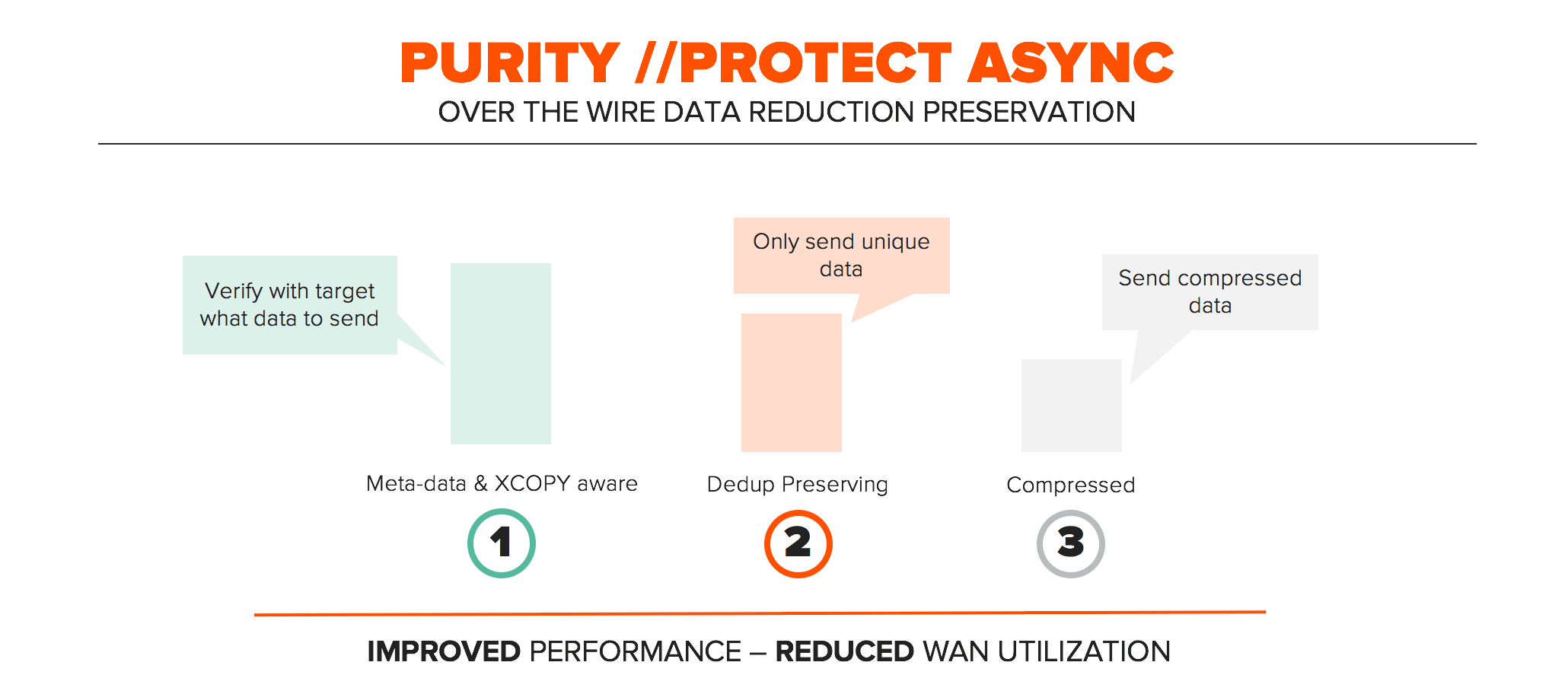
Below is a summary of how Purity//Protect Async reduces the overall amount of data that is replicated over the wire:
- Data reduction from XCOPY & cloning – replication is XCOPY & cloning aware and maintains XCOPY & cloning savings on the wire and target array
- Data reduction from deduplication – dedupe savings on the source are preserved on the wire and target array
- Data reduction from compression – data transferred is always compressed on the wire and target array
Bandwidth savings mean you can rent smaller pipes between your data centers, therefore reducing the overall TCO of the solution. For example, using a T3 link (44Mbps, average cost:$4,000.-$16,000./mo.) instead of an OC-3 link (155Mbps, average. cost: $20,000.-$45,000./mo.), can save you a lot of money!
What’s next?
While Pure’s current replication solution is compelling, you probably have noticed it doesn’t allow you to achieve all use cases, like for example zero RPO. Also as the industry embraces Hybrid IT, we are having more and more conversations with customers which are looking for cloud-like simplicity for their on-premises business continuity strategy. To learn more about these new exciting use cases, join us at Pure//Accelerate where we will be unveiling the next generation of replication technologies.
